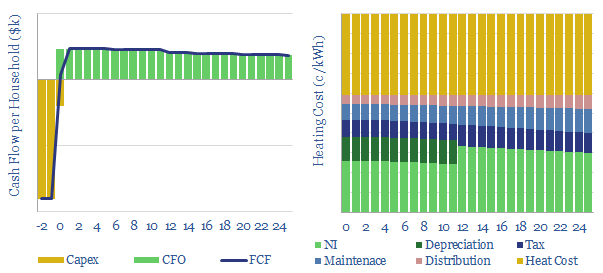District heating supplies residential or commercial consumers with centrally generated heat, waste heat from power generation (combined heat and power) or from other industrial processes. Capturing waste heat lowers CO2-intensity. The district heating system in New York is the largest of its type in the world, supplying over 1800 buildings, including the Empire State Building and the United Nations.
This data-file models generalized economics, based on the capital costs to pipe heat to each household, gas prices, heat consumption and efficiency factors. You can flex these variables in the model.
The economics are highly variable, with prior project costs varying by a factor of 10x, and most sensitive to heat consumption per household. Our base case estimate is for a 10% IRR at 10c/kWh retail heating price. On average, distributing waste heat to consumers costs about 5c/kWh but can be readily combined with geothermal energy systems and thermal energy storage systems.
A total of over 200 US district heating projects are included in this file, including their time of installation, industry categorization (waste, dairies, refineries, etc.), technology and fuel types. System capacities cover a wide range, from small scale 15kW heating systems to 455MW systems used in industry, with most being <5MW.

